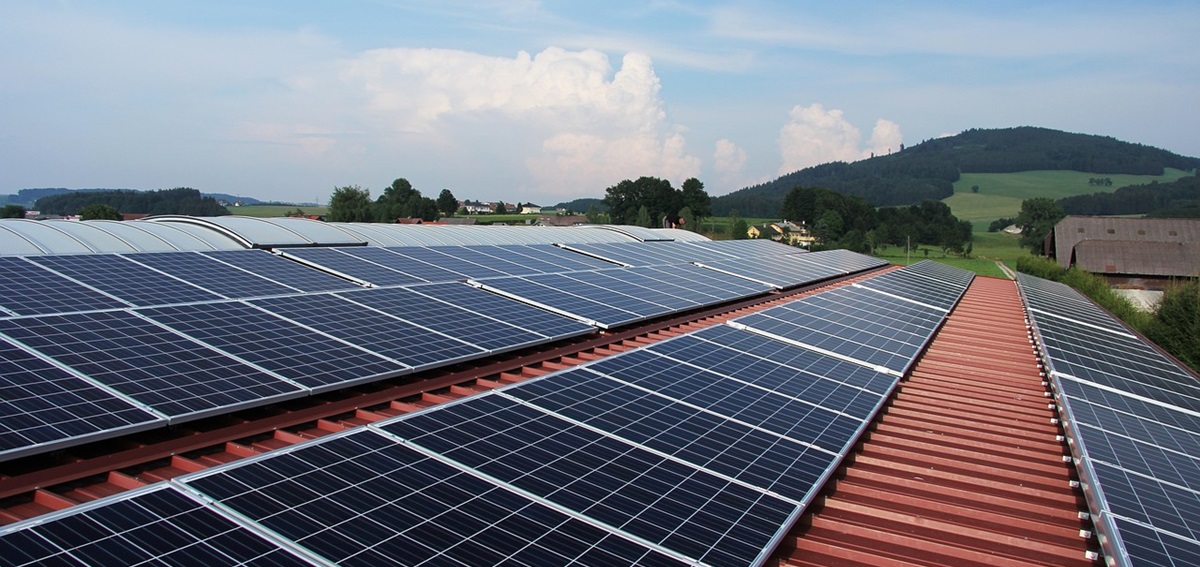Key Factors to Consider for Off-Grid Solar Installation
If you’re like me, you have spent a good deal of time considering going off-grid with a solar power system. In this guide, I want to explore the benefits of choosing off-grid solar… and that means independence from the grid, dollar savings, and environmental benefits. Who doesn’t want to put a stop to spiralling energy prices?
You do, however need to consider several key factors now that you’re getting serious about installing an off-grid solar system. There are elements such as location, your household or business’ energy needs, what you’re prepared to budget, equipment quality, and maintenance post-install. One of the first steps is to determine your energy requirements because without this crucial information, it’s hard to choose the right equipment and navigate the installation process. OK. Let’s get started. I’d love to help you by giving you some expert tips and advice on making the switch to off-grid solar power!
Off-Grid Solar System Key Takeaways:
- Going off-grid with solar power will give you independence from the grid, long-term cost savings, and environmental benefits.
- Remember, you must take into account factors such as location, how much energy you need, budget, quality of equipment, and maintenance.
- You must know your energy needs. This means you need to assess your daily usage and peak demand and consider future needs. And once you know that, then it’s important to choose the right equipment and follow proper installation and maintenance processes.
Why Choose Off-Grid Solar? (Why Not Grid Solar Power?)
When you run an off-grid home, you’ll be astounded by the benefits. Not only that you get power from the solar panels and batteries, instead of grid power (and say good bye to regular power bills) there’s that wonderful feeling of energy independence that comes from being more connected (sorry about the pun) to the way you use power. You become more vested in how you use power and are more mindful.
Independence from the Grid
One of the biggest advantages of a standalone solar system disconnected from the grid is the ability to be completely independent from the traditional power grid. You’ll have peace of mind in terms of energy security and the flexibility to generate electricity in remote areas where access to the main grid may be limited or nonexistent. Power in regional areas is renowned for being interrupted and unreliable. Wouldn’t it be great to let go of that dependence?
Cost Savings in the Long Run
Now, I know you might be asking yourself if the investment is really worth it. Although the initial investment in a solar system can be significant, the long-term cost savings are substantial. Mind you, you may not have a choice. Some grid-connected folk like me can make a choice because we are already on-grid. However, if your area is not serviced it can actually be as expensive to bring the power onto your property.
Investing in solar energy not only reduces your electricity bills significantly but also opens the door to potential government incentives that can further offset the initial costs. Over time, solar systems have proven to have a long lifespan, providing free energy once the payback period is over.
System Payback
Just for a second however, consider that when you move into grid-connected premises and spend tens of thousands on an electrical setup, you won’t be thinking about how many years it will take to pay you back. So, I invite you to think about your real intentions to go off-grid. You want to do it, and that may be all the justification you need. Another analogy: If you’re in the market for a car, you could buy a $5,000 secondhand i30 or a $300,000 luxury car. In neither circumstance do you work out how long it will take to pay back. Just sayin’. 😉
Environmental Benefits
Switching to a self-sufficient solar system is not only beneficial for your wallet but also for the environment. Maybe you’re concerned about your carbon footprint or you just want to burn less fossil fuels in your daily life. Either way, you are leveraging the capabilities of sunlight to produce electricity. This sustainable energy source provides an eco-friendly alternative to traditional fossil fuels, contributing to a cleaner, greener and healthier future for generations to come.
Factors When Designing an Off-Grid Solar Installation
Off-grid power and battery systems need meticulous system design. Later on I’ll fill you in on the actual components like off-grid inverters and types of solar panels. There are myriad types of solar solutions and you need to consider the following things to create the right solar design.
Location and Climate
The efficiency of your solar panels largely depends on your location and the local climate. It stands to reason if you live in an area with consistent sunshine then you’ll generally yield more power from your solar panels compared to regions with frequent cloud cover or long winters.
Energy Needs and Usage
Don’t skimp or underestimate the scope of your energy needs and usage patterns. This info is crucial for sizing your off-grid solar system correctly. What will happen is we’ll create a load profile which will analyze the different electrical appliances and devices you use, along with their power consumption and duration of use. When this is done right, we’ll have the essential data for selecting the right size of solar panels, batteries, and inverters to meet your energy demands efficiently.
Budget and Financing Options
You probably will work to a budget because for most people this is one of the major factors for timing your investment and making cost-relative choices. Your budget and available financing options play a significant role in the planning and execution of your off-grid solar installation. Financing options such as solar loans or leasing programs can help you make the initial investment more manageable.
Quality and Reliability of Equipment
The rule of thumb is to choose the best quality products and reliable equipment that you can afford. That way you can better ensure the longevity and efficiency of your off-grid solar system. Opting for reputable brands for your solar panels, inverters, and batteries ensures better performance and durability. At SWIFT SOLAR and Electrical, we only use reputed brands that stand the test of time, have demonstrably fewer problems and have great after-market support.
Maintenance and Upkeep
No system is set and forget, so, remember that regular maintenance and upkeep are vital to ensure your off-grid solar system continues to operate efficiently. Performing routine maintenance tasks, such as cleaning the panels and monitoring battery levels, is essential to keep your system in top condition. SWIFT can help you by scheduling in annual checks and cleaning.
How to Determine Your Energy Needs
Assessing Your Daily Energy Usage
Now it’s time to accurately assess your daily energy usage and create a comprehensive load profile. You’ll begin by listing all electrical appliances in your home, along with their power ratings in watts. Calculate the daily energy consumption by multiplying the power rating of each appliance by the number of hours it operates each day. It’s not rocket science but hit has to be as accurate as you can manage. I like to use a spreadsheet but maybe you’re not a geek like me.
Estimating Your Peak Energy Demand
You want to estimate your peak energy demand as it is critical to ensure your solar system can handle periods of high power usage. Surge power refers to the temporary spike in power demand that occurs when devices are first turned on, while peak power represents the maximum power usage sustained over a period of time.
Considering Future Energy Needs
When planning your off-grid solar system, consider your future energy needs to ensure the system remains adequate as your usage patterns evolve. So, it’s wise to anticipate increases in energy consumption to avoid outgrowing your system’s capacity in the long run.
Choosing the Right Equipment
Solar Panels (or Solar Array)
Solar panels are the heart of any off-grid solar system, as they convert sunlight into usable electricity. Monocrystalline solar panels are known for their high-efficiency rates and sleek appearance, while polycrystalline panels are more budget-friendly but slightly less efficient. Go for what you can afford. Sometimes more pricey is better (not in all cases!).
Batteries
Batteries are essential for storing the energy generated by your solar panels. Lithium-ion batteries are popular for their high energy density and longer lifespan, while lead-acid batteries are more affordable but have a lower energy density and shorter lifespan. It seems that different types of batteries are being invented, tested and produced very frequently. The choices are expanding so do your research and ask your installer lots of questions in the planning process.
Inverter
An inverter converts the DC power generated by your solar panels into AC power for your home appliances. String inverters are cost-effective, whereas microinverters offer better performance in partially shaded areas. If you have little shade then string inverters are just fine! There are pros and cons to each style of solar panel system. Again, research and ask questions.
Solar Charge Controller
A charge controller regulates the voltage and current coming from the solar panels to the battery. MPPT controllers are more advanced and efficient compared to PWM controllers, especially when the solar panel voltage fluctuates.
Installation Process and Tips
Wiring and Grounding
Proper wiring and grounding are essential for the safety and efficiency of a solar installation. Use high-quality materials and ensure all electrical components are properly connected and grounded.
Personal Protective Equipment (PPE)
Implementing robust safety measures is crucial during the installation and maintenance of your solar system. Using proper PPE and handling electrical components safely reduces the risk of accidents and injuries.
Regular Maintenance and Monitoring
Perform routine maintenance tasks and monitor your system’s performance to ensure it continues to operate efficiently. Regular inspections and cleaning can significantly improve system performance and longevity.
So Many Advantages of Off-Grid … What’s Stopping You?
Well, that about sums it up. There’s a lot to learn. And even if you don’t understand it all, you can get plenty of help choosing the right solar system for a standalone system that’s not connected to the grid, from a trustworthy, expert, and reputable solar installer (like SWIFT SOLAR and Electrical… I couldn’t resist. When it comes to off-grid, the benefits can really outweigh the short-term cash injection to get these systems running. But with 0% finance available, and the government rebates and grants, it may be more affordable than you thought. Besides, you won’t be paying those pesky routine power bills anymore… and that to many is worth it. Ring SWIFT SOLAR on 0422 251 734.



